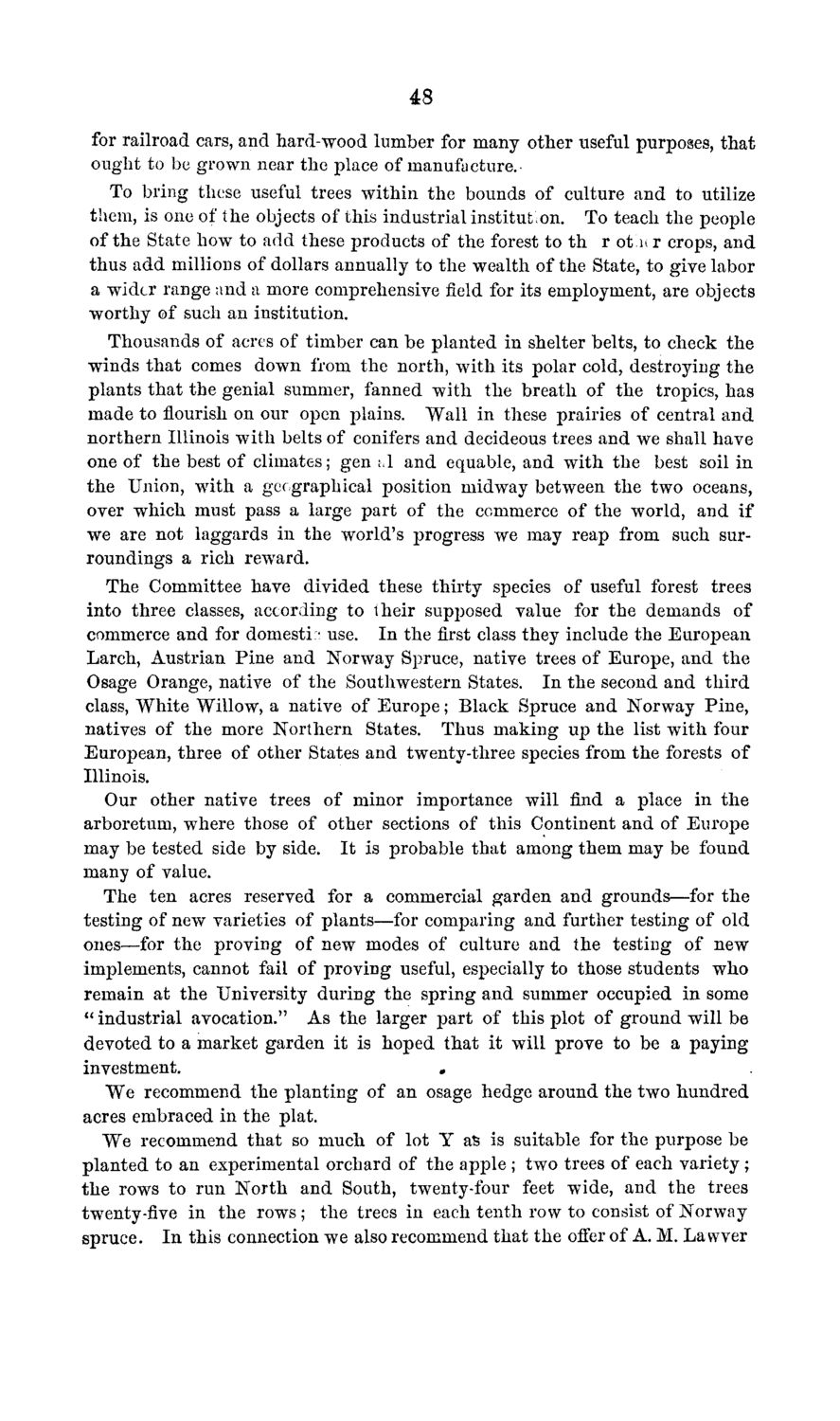| |
| |
Caption: Board of Trustees Minutes - 1869
This is a reduced-resolution page image for fast online browsing.

EXTRACTED TEXT FROM PAGE:
48 for railroad cars, and hard-wood lumber for many other useful purposes, that ought to be grown near the place of manufacture. To bring these useful trees within the bounds of culture and to utilize them, is one of the objects of this industrial institution. To teach the people of the State how to add these products of the forest to t h r ot'.u r crops, and thus add millions of dollars annually to the wealth of the State, to give labor a wider range and a more comprehensive field for its employment, are objects worthy of such an institution. Thousands of acres of timber can be planted in shelter belts, to check the winds that comes down from the north, with its polar cold, destroying the plants that the genial summer, fanned with the breath of the tropics, has made to flourish on our open plains. Wall in these prairies of central and northern Illinois with belts of conifers and decideous trees and we shall have one of the best of climates; gen {,1 and equable, and with the best soil in the Union, with a geographical position midway between the two oceans, over which must pass a large part of the commerce of the world, and if we are not laggards in the world's progress we may reap from such surroundings a rich reward. The Committee have divided these thirty species of useful forest trees into three classes, according to their supposed value for the demands of commerce and for domestic use. In the first class they include the European Larch, Austrian Pine and Norway Spruce, native trees of Europe, and t h e Osage Orange, native of the Southwestern States. In the second and t h i r d class, White Willow, a native of E u r o p e ; Black Spruce and Norway Pine, natives of the more Northern States. Thus making up the list with four European, three of other States and twenty-three species from the forests of Illinois. Our other native trees of minor importance will find a place in t h e arboretum, where those of other sections of this Continent and of Europe may be tested side by side. It is probable that among them may be found many of value. The ten acres reserved for a commercial garden and grounds—for t h e testing of new varieties of plants—for comparing and further testing of old ones—for the proving of new modes of culture and the testing of new implements, cannot fail of proving useful, especially to those students who remain at the "University during the spring and summer occupied in some " industrial avocation." As the larger part of this plot of ground will be devoted to a market garden it is hoped that it will prove to be a paying investment. • We recommend the planting of an osage hedge around the two hundred acres embraced in the plat. We recommend that so much of lot Y afe is suitable for the purpose be planted to an experimental orchard of the apple ; two trees of each variety; t h e rows to run N o r t h and South, twenty-four feet wide, and the trees twenty-five in the rows ; the trees in each tenth row to consist of Norway spruce. I n this connection we also recommend that the offer of A. M. Lawver
| |